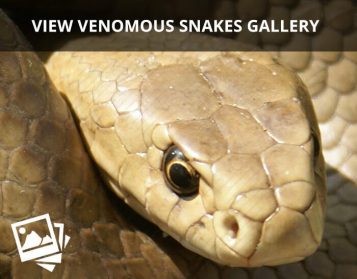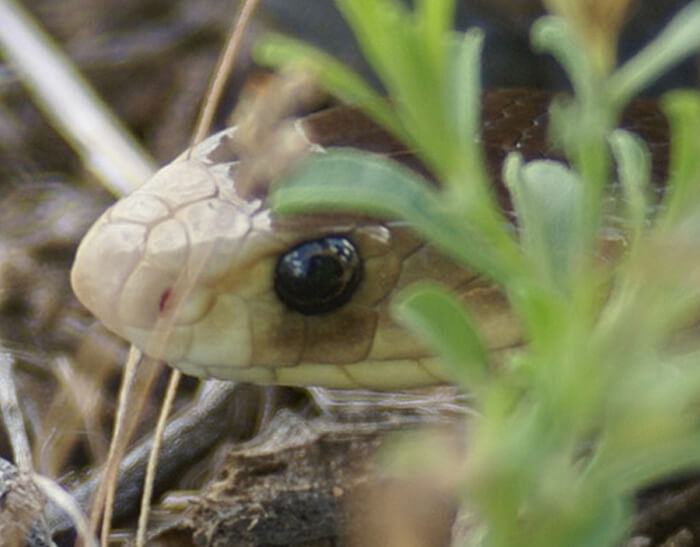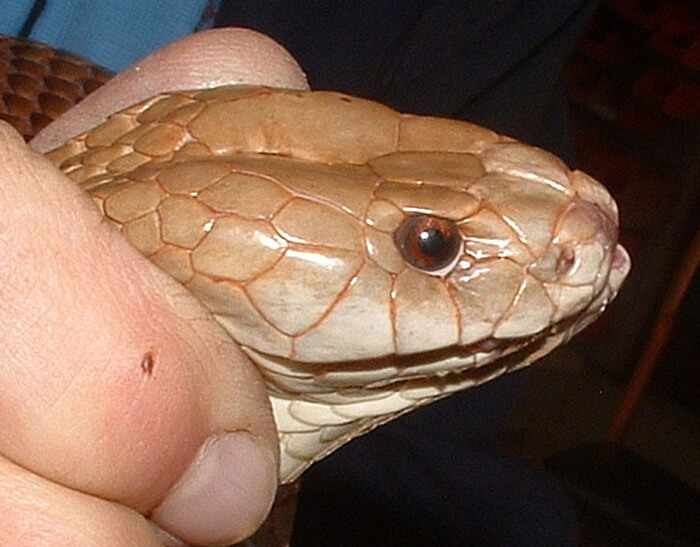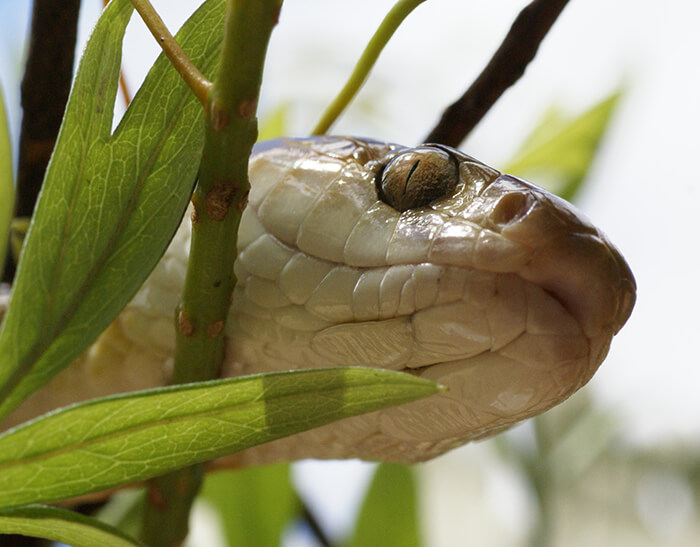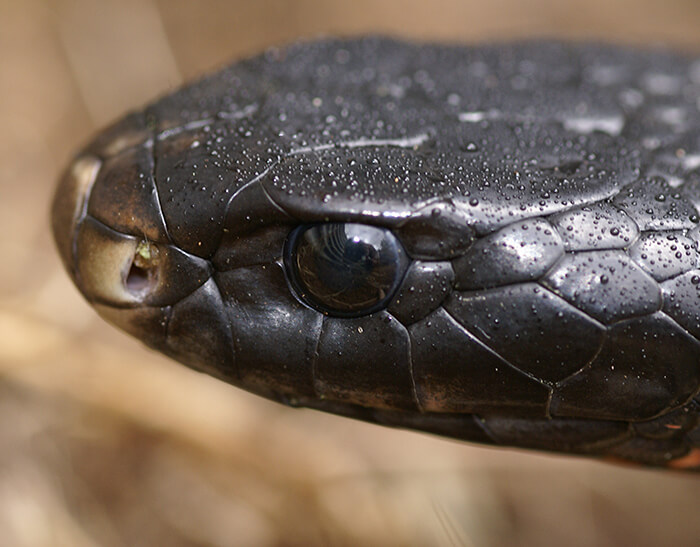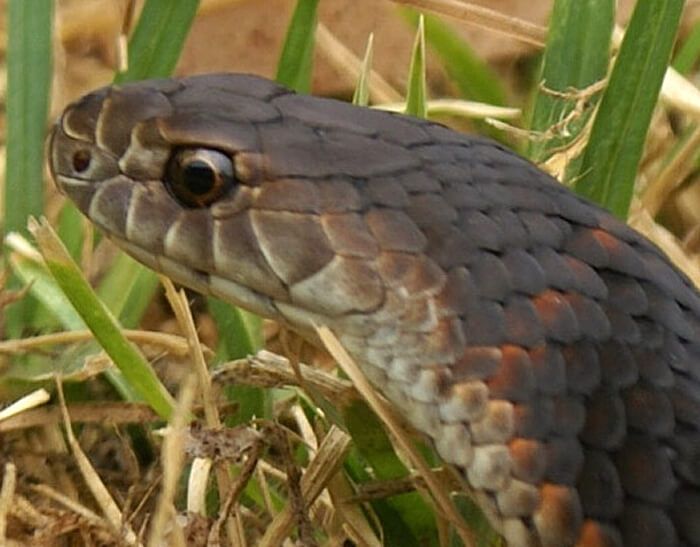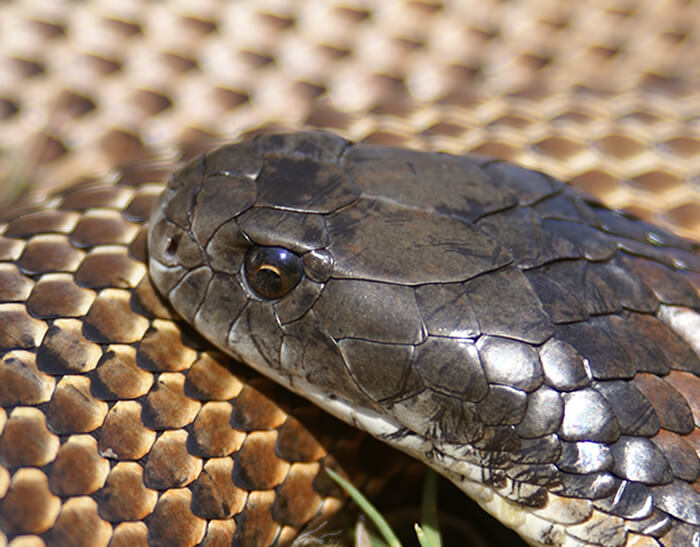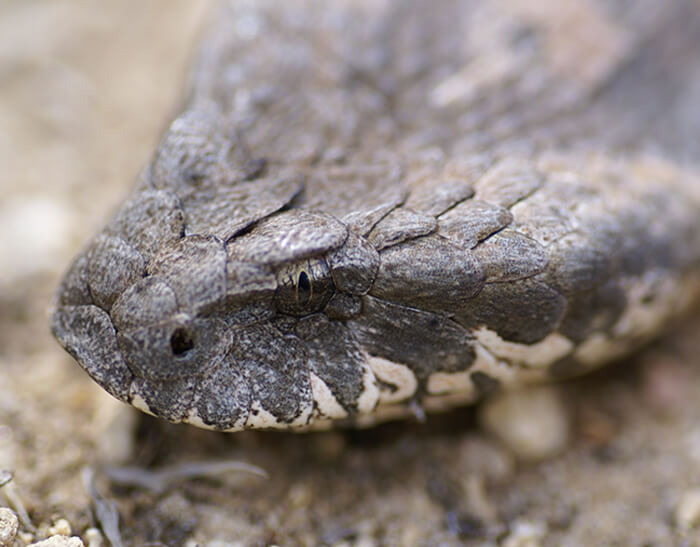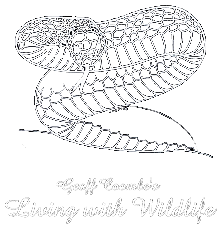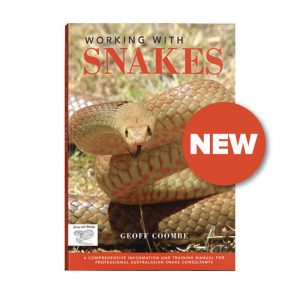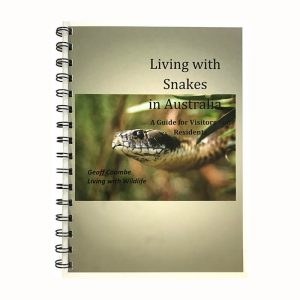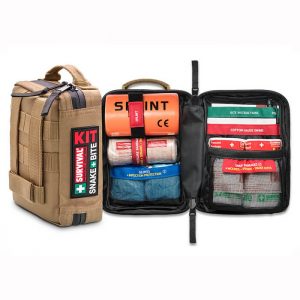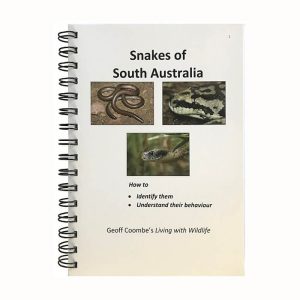Australian Snakes
Australia has 213 known species (as of 2020) including 109 terrestrial and 30 marine venomous snakes. About a third are dangerously venomous, but most are small and not normally considered a health risk. We have more technically venomous snakes than anywhere else in the world.
This page lists the most common of the larger venomous snakes native to Australia – and where they live. Find your region to see who you share it with! See what these beautiful creatures look like in the photo gallery and which is the most venomous.
Central Western Australia
North of Shark Bay to Broome, east to NT
- Desert Death Adder
- Pilbara Death Adder
- Yellow-faced Whipsnake
- Mulga Snake
- Butler’s or Spotted Mulga Snake
- Ringed Brown Snake
- Western Brown Snake / Gwardar
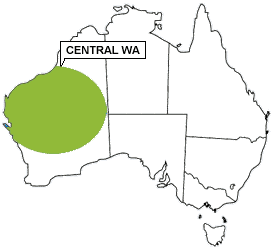
South West Western Australia
South West Western Australia
- Southern Death Adder
- Yellow-faced Whipsnake
- Bardick
- Tiger Snake
- Mulga Snake
- Butler’s or Spotted Mulga Snake
- Dugite
- Ringed Brown Snake
- Western Brown Snake / Gwardar
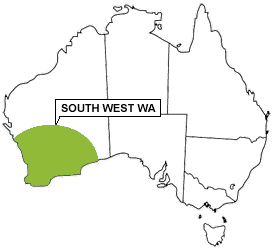
Central Australia
Southern NT, eastern WA, northern SA, S/W Qld
- Desert Death Adder
- Yellow-faced Whipsnake
- Inland Taipan
- Western Deserts Taipan
- Mulga Snake
- Speckled Brown Snake
- Ringed Brown Snake
- Western Brown Snake / Gwardar
- Eastern Brown Snake
- Curl Snake
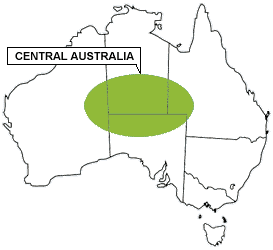
Tropical Australia
Northern WA, northern NT, Gulf of Carpentaria & Cape York of Qld
- Northern Death Adder
- Northern Small-eyed Snake
- Greater Black Whipsnake
- Lesser Black Whipsnake
- Coastal Taipan
- Mulga Snake
- Pygmy Mulga Snake
- Ingram’s Brown Snake
- Ringed Brown Snake
- Western Brown Snake / Gwardar
- Northern Brown Snake
- Eastern Brown Snake
- Brown Tree Snake
- Barkly Tableland Death Adder
- Papuan Death Adder
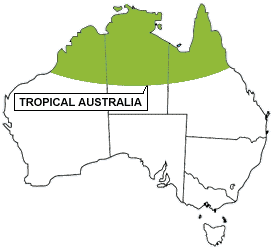
South Central Australia
Southern WA east of S/W, central & southern SA & west of NSW
- Southern Death Adder
- Pygmy Copperhead
- Yellow-faced Whipsnake
- Bardick
- Tiger Snake
- Mulga Snake
- Red-bellied Black Snake
- Dugite
- Peninsula Brown Snake
- Western Brown Snake / Gwardar
- Eastern Brown Snake
- Strap-Snouted Brown Snake
- Curl Snake

Tasmania
Tasmania (including Bass Strait Islands)
- Lowland Copperhead
- Tiger Snake
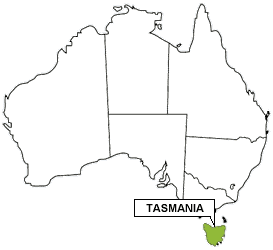
South East SA, Victoria & ACT
S/E SA, Victoria, ACT & south NSW
- Lowland Copperhead
- Highlands Copperhead
- Red-Bellied Black Snake
- Eastern Small-eyed Snake
- Tiger Snake
- Eastern Brown Snake
- Strap-Snouted Brown Snake
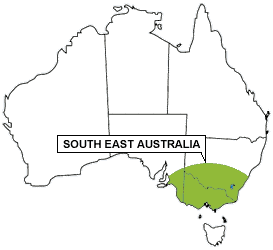
Eastern Australia (except Cape York)
NSW, Queensland
- Southern Death Adder
- Eastern Small-eyed Snake
- Yellow-faced Whipsnake
- Lesser Black Whipsnake
- Pale-headed Snake
- Broad-headed Snake
- Stephen’s Banded Snake
- Tiger Snake
- Coastal Taipan
- Mulga Snake
- Collett’s Snake
- Spotted/Blue-bellied Black
- Red-bellied Black Snake
- Speckled Brown Snake
- Ringed Brown Snake
- Brown Tree Snake
- Western Brown Snake / Gwardar
- Eastern Brown Snake
- Strap-Snouted Brown Snake
- Curl Snake
- Rough-scaled Snake
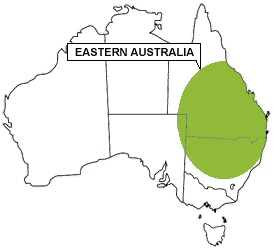
Reference: Cogger, Harold G. (2018). Reptiles & Amphibians of Australia. CSIRO Publishing.
If you want to know more about life in Australia and in particular, some snake stories, check out bobinoz.com.
ACT Snake Removals provide a friendly, responsive and effective snake catching service for people living in Canberra ACT and in the bordering NSW region. Their government licensed and insured staff respond to calls from members of the public who require venomous snakes to be safely captured and relocated to more appropriate habitats. Visit the ACT Snake Removals website or contact Gavin Smith on 0450 210 090.
Australia’s Most Venomous Snakes
There are different methods that have been used to determine how dangerous a snake is. Most commonly, it is to measure the toxicity of the venom produced by a species. This is usually a measurement of LD50 – the amount of the toxin (in milligrams) required to kill 50% of test animals within a given time (usually mice, weight in kilograms) – the lethal dose 50%. The smaller the measurement of LD50 the more potent the venom, but note that it is not based on human physiology.
Toxicity ‘The Cobra Scale’
LD50 tests do not consider the differences associated with them . The various methods of injecting a toxin into the test animal include:
- intravenous, into a vein
- subcutaneous, under the skin
- intramuscular, into the muscle
- intraperitoneal, into the body cavity
Usually LD50s are conducted by any one of the above routes. Any comparisons with different LD50s should be by the same route at least but there are many other variants which make comparisons invalid.
Using mice for toxicity tests is convenient and the method can be used as a guide although the actual value of it is debated by experts.
Different animals have been used for tests, not always mice. Increasingly today, tests are conducted with tissues rather than live animals due to animal welfare concerns. One is the ‘chick biventer cervicis nerve muscle preparations assay’ which examines neuromuscular blocking toxins.
A more readily identifiable measure has been suggested: The ‘Cobra Scale’. A value of one is assigned to the Indian Cobra and the venoms of all other species are compared by using LD50s with the same test animal, same route of injection and same data set, wherever possible.
Using this cobra scale, Eastern Brown Snakes have a relative toxicity of 12.5, meaning it is twelve and a half times more toxic than the Indian Cobra.
Other snakes have the following scores:
- Inland Taipan 50.0
- (Eastern Brown Snake 12.5)
- Coastal Taipan 7.8
- Tiger Snake 4.2
- Gwardar (Western Brown Snake) 1.5
- Common Death Adder 1.5
- Copperhead (Lowlands?) 1.0
- Dugite (Spotted Brown Snake) 0.9
- Rough-scaled Snake 0.5
- Stephens Banded Snake 0.4
- Spotted Black Snake 0.3
- Mulga Snake 0.3
- Red-bellied Black Snake 0.2
- Small-eyed Snake 0.2
- Whip Snake (Yellow-faced?) ˂ 0.1
- King Cobra 0.3
- Eastern Diamond-backed Rattlesnake ˂ 0.1
This is all very well for an ‘over the fence’ argument but how accurate is it to explain the possible level of danger when a venomous snake has been found on someone’s property or worse if it decides to take up residence?
Humans are not all the same – we are individually sensitive to medicines, chemicals, environmental toxins – and venoms.
Mice and men may be mammals but that’s about the only similarity.
‘Dangerousness’
To define how dangerous a venomous snake is, there are many variables to consider, a few of which are: the species, snake’s size, individual variations in the toxins, any seasonal variations in its toxins and geographical variations in toxins.
Another factor that must be considered when explaining what is “dangerous” includes the likelihood of humans encountering a snake, since many of them are secretive, cryptic or nervous and most residents rarely see them.
The potential danger with venomous snakes also includes any health issues of a victim, their age, their size or body bulk and even sensitivity to natural toxins – sensitivity to bee venom is one of the most common.
To give a better idea of the ‘dangerousness’ of our venomous snakes, the Queensland Museum some years ago suggested measuring five different factors for each species:
- The toxicity of their venom
- The quantity of venom ejected
- The length of the snake’s fangs
- The temperament of the snake
- The number of people bitten
They gave a number from 1 – 5 for each factor then tallied them for an overall figure. The higher the number, the more dangerous the species. For our medically important venomous snakes, they were rated as follows:
- Coastal Taipan – 21
- Mulga Snake – 16
- Southern Death Adder – 15
- Eastern Brown Snake – 14
- Tiger Snake – 14
- Inland Taipan – 12
- Gwardar (Western Brown) – 10
- (Lowlands) Copperhead – 10
- Red-Bellied Black Snake – 9
- Rough-Scaled Snake – 7
- Dugite – 6
- Small-Eyed Snake – 6
Eastern Browns are rated 4th although they have very potent venom, because of the small fangs and venom yield, but rated higher than most of the others due to their excitable behaviour and frequency of people bitten.
Inland Taipans are rated even lower, despite having the most toxic venom (measured experimentally), due to their more even behaviour and very few humans bitten in the isolated regions they live.
This is a better approach than just referring to how toxic a venom is but there are still too many variables for it to be accurate.
There is no simple answer.


